THE BOND BETWEEN DIAMONDS AND VOLCANOES
by Anne Fornier
by Anne Fornier
Diamonds are one of nature’s oldest creations
Diamonds are one of nature’s oldest creations. It is also one of the most beautiful. Diamonds are made of pure carbon, crystallized under pressure, and raised to a temperature of over 1000 degrees. Their extreme hardness results from their very dense atomic structure. Carbon crystallizes in a cubic shape – a perfect diamond is octahedral in shape.
All that is known about the conditions under which diamonds were created comes from theories of scientific experiments in the production of synthetic diamonds. According to the most famous, diamonds were formed in liquid magma while cooling under pressure and at a temperature of over 1300 degrees. This pressure and temperature only exist at depths of 130 to 200 km below the Earth’s surface in active volcanoes.
The peculiarity of diamonds
The chemical composition of magma is not uniform, so there are two types of diamonds: Type 1 diamonds with nitrogen in their atomic structure and Type 2, without nitrogen. When the two forces of formation, temperature, and pressure, are not homogeneous, the diamonds thus created show irregularities and malformations such as strata or growth layers.
Diamonds are formed in the bowels of the Earth, at great depth and high temperature. They come to the surface during volcanic eruptions. They are found trapped in magmatic rocks called kimberlites.
The formation of diamonds
Formed at a depth of around 180 km, diamonds are transported to the Earth’s surface by magmas called kimberlites. These magmas are then ejected by volcanoes and cool to form magmatic rocks containing diamond enclaves. However, these magmas are very special. They form at great depth, at the lithosphere-asthenosphere boundary, more than 150 kilometers into the Earth’s mantle, and are characteristic of certain areas of the Earth’s surface. Indeed, kimberlites are observed preferentially in cratonic regions, characterized by a very old continental lithosphere.
Diamonds are carried by eruptive rocks
If during crystallisation, diamonds are not exposed to air to cool and reduce in pressure quickly, they will turn into graphite. It seems, therefore, that diamonds must emerge from the bowels of the earth with the eruption of volcanic rocks. Diamonds are carried by eruptive rocks, pipes and dykes that contain kimberlite or lamproitic rocks. Pipes, as miners call them, are 100 million to 1.2 billion years old; these violent eruptions of volcanic rocks could not happen today. As old continents drifted and then reassembled to form new ones, these pipes were distributed across the globe. Today, 80% of diamonds are mined in the 7 main producing countries: Australia, Congo, Botswana, South Africa, Russia, Namibia and Angola.
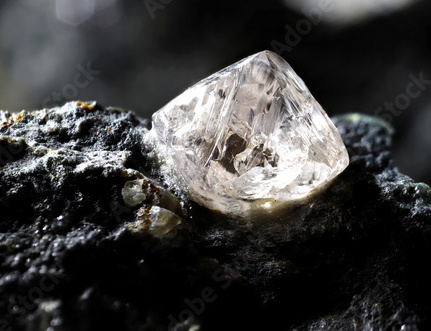
Diamond deposits
There are 2 types of diamond deposits. Primary deposits consist of pipes and dykes that contain kimberlite rocks, the pathways that diamonds took to reach the earth’s surface. These deposits are mined using complicated, invasive and environmentally damaging industrial technology. As they weather, the diamonds break away from the primary rock and are carried away by runoff, streams and rivers. They are then dispersed along their path. The deposits formed in this way are called secondary or alluvial deposits. The distance travelled by alluvial diamonds varies greatly and can sometimes be considerable, as they can be washed down to beaches or the seabed. These diamonds can be extracted using manual artisanal techniques, while respecting nature.
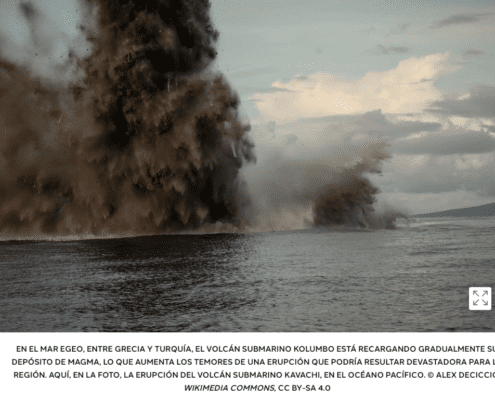
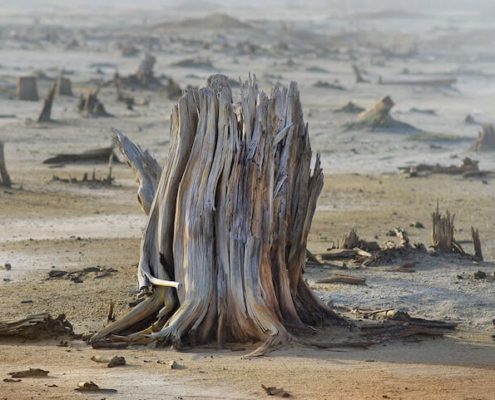 https://volcanofoundation.org/wp-content/uploads/2021/09/consecuencias-de-la-lluvia-acida-arboles-secos-2-1.jpeg
481
600
Anne Fornier
https://volcanofoundation.org/wp-content/uploads/2021/04/volcano-foundation-1-1.png
Anne Fornier2022-08-20 22:43:212022-08-20 22:43:21Risque de catastrophe volcanique
https://volcanofoundation.org/wp-content/uploads/2021/09/consecuencias-de-la-lluvia-acida-arboles-secos-2-1.jpeg
481
600
Anne Fornier
https://volcanofoundation.org/wp-content/uploads/2021/04/volcano-foundation-1-1.png
Anne Fornier2022-08-20 22:43:212022-08-20 22:43:21Risque de catastrophe volcanique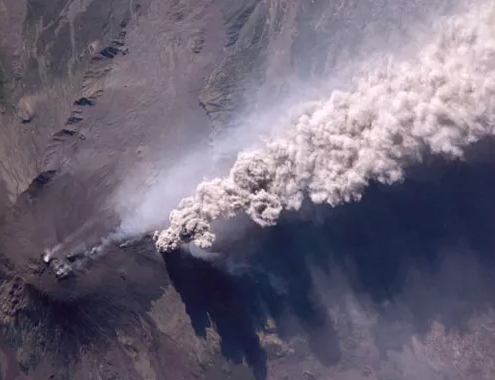
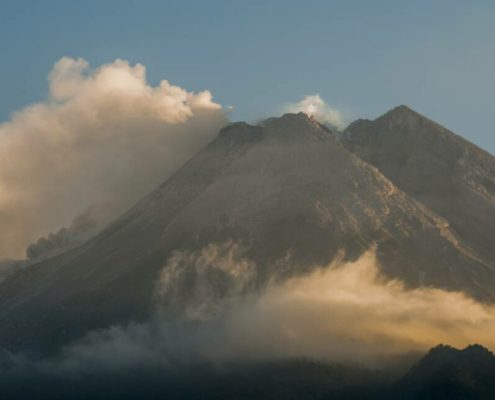
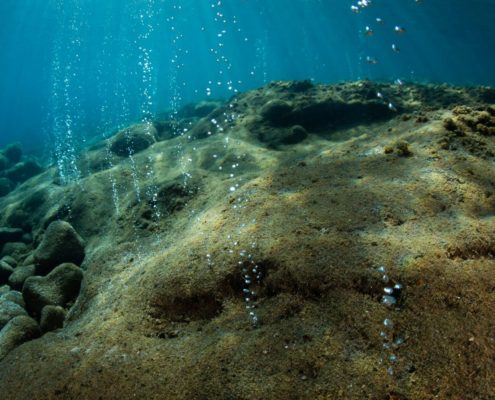
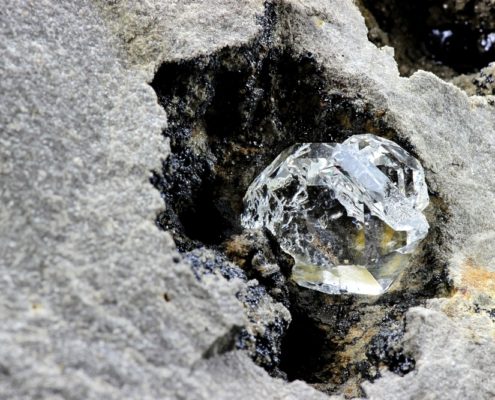 https://volcanofoundation.org/wp-content/uploads/2022/02/diamantes-4-1.jpg
667
1000
Anne Fornier
https://volcanofoundation.org/wp-content/uploads/2021/04/volcano-foundation-1-1.png
Anne Fornier2022-02-05 11:34:112022-02-17 19:45:31DIAMONDS AND VOLCANOES
https://volcanofoundation.org/wp-content/uploads/2022/02/diamantes-4-1.jpg
667
1000
Anne Fornier
https://volcanofoundation.org/wp-content/uploads/2021/04/volcano-foundation-1-1.png
Anne Fornier2022-02-05 11:34:112022-02-17 19:45:31DIAMONDS AND VOLCANOES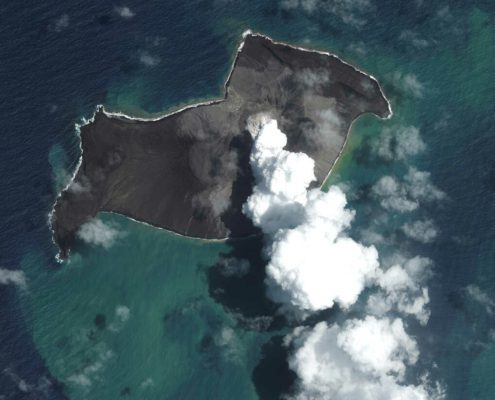
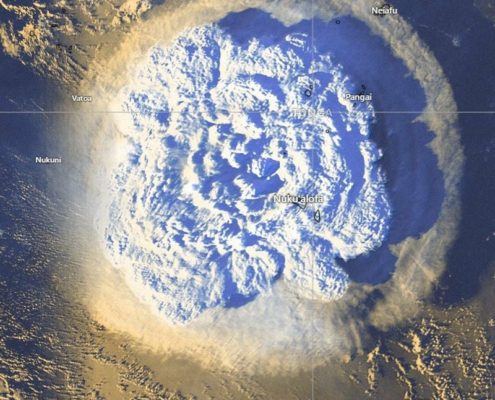 https://volcanofoundation.org/wp-content/uploads/2022/01/hunga-tonga-huga-ha-apai-eruption.jpg
913
800
Anne Fornier
https://volcanofoundation.org/wp-content/uploads/2021/04/volcano-foundation-1-1.png
Anne Fornier2022-01-17 13:41:312022-01-17 14:14:53ERUPTION DU VOLCAN HUNGA TONGA-HUNGA HA’APA
https://volcanofoundation.org/wp-content/uploads/2022/01/hunga-tonga-huga-ha-apai-eruption.jpg
913
800
Anne Fornier
https://volcanofoundation.org/wp-content/uploads/2021/04/volcano-foundation-1-1.png
Anne Fornier2022-01-17 13:41:312022-01-17 14:14:53ERUPTION DU VOLCAN HUNGA TONGA-HUNGA HA’APA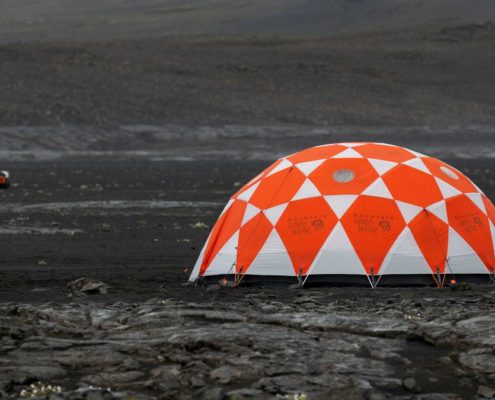 https://volcanofoundation.org/wp-content/uploads/2022/01/nasa_iceland_afp_full_1565770563359-min-1-e1641307123144.jpeg
675
1200
Anne Fornier
https://volcanofoundation.org/wp-content/uploads/2021/04/volcano-foundation-1-1.png
Anne Fornier2022-01-04 15:04:362022-01-04 15:59:05LA NASA TESTE CURIOSITY ROBOT POUR MARS EN ISLANDE
https://volcanofoundation.org/wp-content/uploads/2022/01/nasa_iceland_afp_full_1565770563359-min-1-e1641307123144.jpeg
675
1200
Anne Fornier
https://volcanofoundation.org/wp-content/uploads/2021/04/volcano-foundation-1-1.png
Anne Fornier2022-01-04 15:04:362022-01-04 15:59:05LA NASA TESTE CURIOSITY ROBOT POUR MARS EN ISLANDE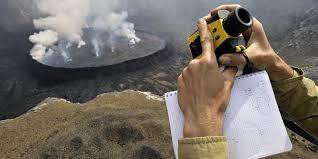 https://volcanofoundation.org/wp-content/uploads/2021/12/téléchargement-min.jpeg
159
318
Anne Fornier
https://volcanofoundation.org/wp-content/uploads/2021/04/volcano-foundation-1-1.png
Anne Fornier2022-01-03 14:48:462022-01-03 14:56:29MACHINE LEARNING ET TECHNOLOGIE EN VOLCANOLOGIE
https://volcanofoundation.org/wp-content/uploads/2021/12/téléchargement-min.jpeg
159
318
Anne Fornier
https://volcanofoundation.org/wp-content/uploads/2021/04/volcano-foundation-1-1.png
Anne Fornier2022-01-03 14:48:462022-01-03 14:56:29MACHINE LEARNING ET TECHNOLOGIE EN VOLCANOLOGIE https://volcanofoundation.org/wp-content/uploads/2021/12/Capture-décran-2021-12-21-à-13.30.17-min-min-1.png
1724
2560
Anne Fornier
https://volcanofoundation.org/wp-content/uploads/2021/04/volcano-foundation-1-1.png
Anne Fornier2021-12-21 13:46:082021-12-21 13:50:13ANNE FORNIER PUBLIÉE DANS REVISTA LOGER (RCLGR)
https://volcanofoundation.org/wp-content/uploads/2021/12/Capture-décran-2021-12-21-à-13.30.17-min-min-1.png
1724
2560
Anne Fornier
https://volcanofoundation.org/wp-content/uploads/2021/04/volcano-foundation-1-1.png
Anne Fornier2021-12-21 13:46:082021-12-21 13:50:13ANNE FORNIER PUBLIÉE DANS REVISTA LOGER (RCLGR)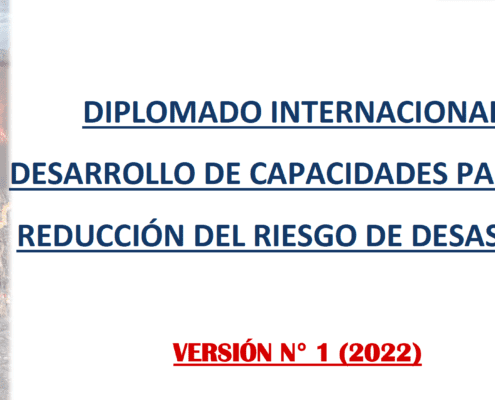


 https://volcanofoundation.org/wp-content/uploads/2021/10/volcano-foundation-support-local-scientifics.jpg
608
1080
Anne Fornier
https://volcanofoundation.org/wp-content/uploads/2021/04/volcano-foundation-1-1.png
Anne Fornier2021-10-29 16:52:172021-10-29 16:52:17NOUS APPUYONS LA FORMATION DES SCIENTIFIQUES DE TERRAIN
https://volcanofoundation.org/wp-content/uploads/2021/10/volcano-foundation-support-local-scientifics.jpg
608
1080
Anne Fornier
https://volcanofoundation.org/wp-content/uploads/2021/04/volcano-foundation-1-1.png
Anne Fornier2021-10-29 16:52:172021-10-29 16:52:17NOUS APPUYONS LA FORMATION DES SCIENTIFIQUES DE TERRAIN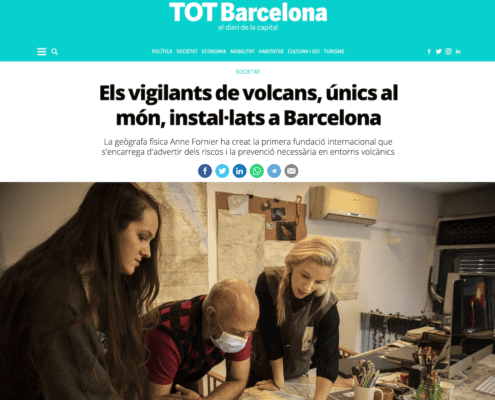
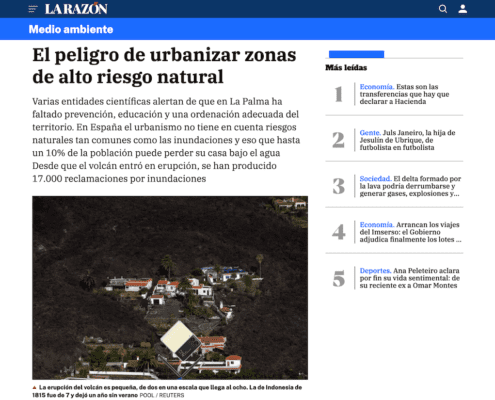 https://volcanofoundation.org/wp-content/uploads/2021/10/peligro-urbanizar-riesgo-natural-la-razon-.png
825
1200
Anne Fornier
https://volcanofoundation.org/wp-content/uploads/2021/04/volcano-foundation-1-1.png
Anne Fornier2021-10-19 12:42:172021-10-19 12:44:19LE DANGER DE L’URBANISATION DES ZONES NATURELLES À HAUT RISQUE
https://volcanofoundation.org/wp-content/uploads/2021/10/peligro-urbanizar-riesgo-natural-la-razon-.png
825
1200
Anne Fornier
https://volcanofoundation.org/wp-content/uploads/2021/04/volcano-foundation-1-1.png
Anne Fornier2021-10-19 12:42:172021-10-19 12:44:19LE DANGER DE L’URBANISATION DES ZONES NATURELLES À HAUT RISQUE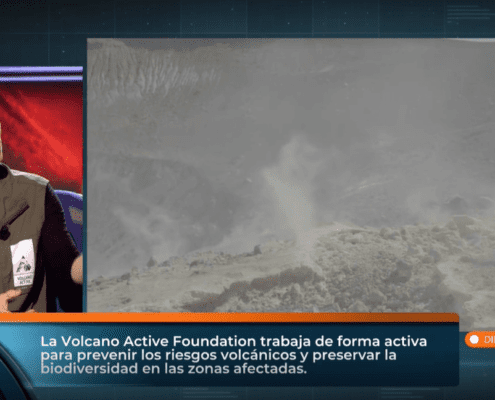 https://volcanofoundation.org/wp-content/uploads/2021/10/Anne-horizonte-cuatro-tv.png
648
1200
Anne Fornier
https://volcanofoundation.org/wp-content/uploads/2021/04/volcano-foundation-1-1.png
Anne Fornier2021-10-08 12:34:132021-10-19 12:43:49LE MANQUE DE DILIGENCE À LA PALMA, ÎLES CANARIES
https://volcanofoundation.org/wp-content/uploads/2021/10/Anne-horizonte-cuatro-tv.png
648
1200
Anne Fornier
https://volcanofoundation.org/wp-content/uploads/2021/04/volcano-foundation-1-1.png
Anne Fornier2021-10-08 12:34:132021-10-19 12:43:49LE MANQUE DE DILIGENCE À LA PALMA, ÎLES CANARIES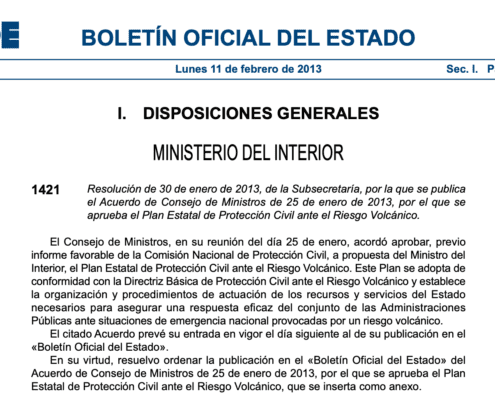 https://volcanofoundation.org/wp-content/uploads/2021/10/boletin-riesgo-volcanico.png
974
1536
Anne Fornier
https://volcanofoundation.org/wp-content/uploads/2021/04/volcano-foundation-1-1.png
Anne Fornier2021-10-07 14:23:412021-10-07 22:46:07NOS QUESTIONS AU CONGRÈS DES DÉPUTÉS ESPAGNOL
https://volcanofoundation.org/wp-content/uploads/2021/10/boletin-riesgo-volcanico.png
974
1536
Anne Fornier
https://volcanofoundation.org/wp-content/uploads/2021/04/volcano-foundation-1-1.png
Anne Fornier2021-10-07 14:23:412021-10-07 22:46:07NOS QUESTIONS AU CONGRÈS DES DÉPUTÉS ESPAGNOL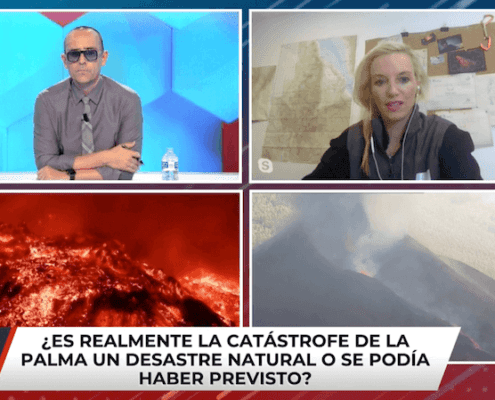
 https://volcanofoundation.org/wp-content/uploads/2021/10/palma-gobiernos-abc.png
741
800
Anne Fornier
https://volcanofoundation.org/wp-content/uploads/2021/04/volcano-foundation-1-1.png
Anne Fornier2021-10-05 10:43:022021-10-05 12:04:01VOLCANO FOUNDATION DANS L’ABC.ES
https://volcanofoundation.org/wp-content/uploads/2021/10/palma-gobiernos-abc.png
741
800
Anne Fornier
https://volcanofoundation.org/wp-content/uploads/2021/04/volcano-foundation-1-1.png
Anne Fornier2021-10-05 10:43:022021-10-05 12:04:01VOLCANO FOUNDATION DANS L’ABC.ES https://volcanofoundation.org/wp-content/uploads/2021/10/volcano-foundation-timeout.png
1200
1402
Anne Fornier
https://volcanofoundation.org/wp-content/uploads/2021/04/volcano-foundation-1-1.png
Anne Fornier2021-10-03 11:41:262021-10-06 12:20:38LA FONDATION DANS TIMEOUT BCN
https://volcanofoundation.org/wp-content/uploads/2021/10/volcano-foundation-timeout.png
1200
1402
Anne Fornier
https://volcanofoundation.org/wp-content/uploads/2021/04/volcano-foundation-1-1.png
Anne Fornier2021-10-03 11:41:262021-10-06 12:20:38LA FONDATION DANS TIMEOUT BCN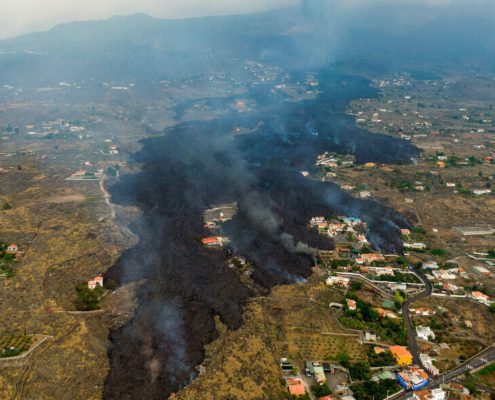 https://volcanofoundation.org/wp-content/uploads/2021/09/la-palma-disaster.jpeg
591
1050
Anne Fornier
https://volcanofoundation.org/wp-content/uploads/2021/04/volcano-foundation-1-1.png
Anne Fornier2021-09-23 11:10:092021-09-28 11:01:01ÉRUPTION LA PALMA DÉTRUIT DES MAISONS, DÉPLACENT 6 500 PERSONNES
https://volcanofoundation.org/wp-content/uploads/2021/09/la-palma-disaster.jpeg
591
1050
Anne Fornier
https://volcanofoundation.org/wp-content/uploads/2021/04/volcano-foundation-1-1.png
Anne Fornier2021-09-23 11:10:092021-09-28 11:01:01ÉRUPTION LA PALMA DÉTRUIT DES MAISONS, DÉPLACENT 6 500 PERSONNES
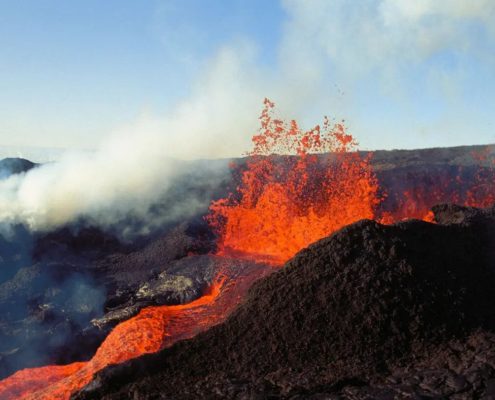 https://volcanofoundation.org/wp-content/uploads/2021/07/Mauna-Loa.jpg-min.jpg
811
1200
Anne Fornier
https://volcanofoundation.org/wp-content/uploads/2021/04/volcano-foundation-1-1.png
Anne Fornier2021-09-10 15:30:232021-09-28 11:06:47PARTENARIAT AVEC L’ASSOCIATION CRIHU
https://volcanofoundation.org/wp-content/uploads/2021/07/Mauna-Loa.jpg-min.jpg
811
1200
Anne Fornier
https://volcanofoundation.org/wp-content/uploads/2021/04/volcano-foundation-1-1.png
Anne Fornier2021-09-10 15:30:232021-09-28 11:06:47PARTENARIAT AVEC L’ASSOCIATION CRIHU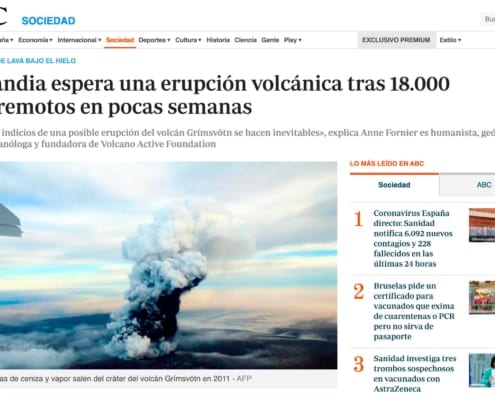 https://volcanofoundation.org/wp-content/uploads/2021/03/articulo-anne-abc.jpg
1343
2021
Anne Fornier
https://volcanofoundation.org/wp-content/uploads/2021/04/volcano-foundation-1-1.png
Anne Fornier2021-09-09 16:45:112021-09-28 11:07:36ARTICLE D’ANNE FORNIER DANS ABC SUR L’ÉRUPTION VOLCANIQUE EN ISLANDE
https://volcanofoundation.org/wp-content/uploads/2021/03/articulo-anne-abc.jpg
1343
2021
Anne Fornier
https://volcanofoundation.org/wp-content/uploads/2021/04/volcano-foundation-1-1.png
Anne Fornier2021-09-09 16:45:112021-09-28 11:07:36ARTICLE D’ANNE FORNIER DANS ABC SUR L’ÉRUPTION VOLCANIQUE EN ISLANDE https://volcanofoundation.org/wp-content/uploads/2021/09/armando-aremero-association.png
1200
1202
Anne Fornier
https://volcanofoundation.org/wp-content/uploads/2021/04/volcano-foundation-1-1.png
Anne Fornier2021-09-06 15:49:202021-09-28 11:08:24NOUS SOMMES ASSOCIÉS À LA FONDATION ARMANDO ARMERO
https://volcanofoundation.org/wp-content/uploads/2021/09/armando-aremero-association.png
1200
1202
Anne Fornier
https://volcanofoundation.org/wp-content/uploads/2021/04/volcano-foundation-1-1.png
Anne Fornier2021-09-06 15:49:202021-09-28 11:08:24NOUS SOMMES ASSOCIÉS À LA FONDATION ARMANDO ARMERO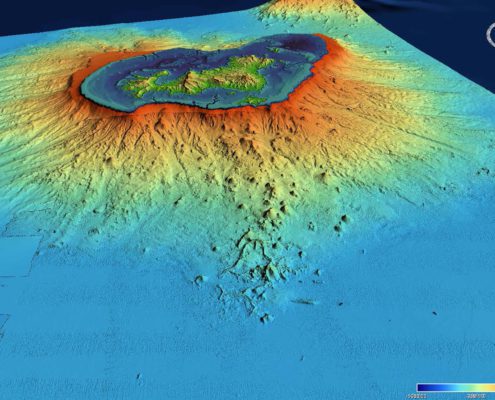 https://volcanofoundation.org/wp-content/uploads/2021/07/actualite-volcan-seismes-mayotte-surveillance-revosima-001.jpeg
1296
1920
Anne Fornier
https://volcanofoundation.org/wp-content/uploads/2021/04/volcano-foundation-1-1.png
Anne Fornier2021-08-23 09:39:582021-09-28 11:18:11UN NOUVEAU VOLCAN ÉMERGE À MAYOTTE DEPUIS MAI 2019
https://volcanofoundation.org/wp-content/uploads/2021/07/actualite-volcan-seismes-mayotte-surveillance-revosima-001.jpeg
1296
1920
Anne Fornier
https://volcanofoundation.org/wp-content/uploads/2021/04/volcano-foundation-1-1.png
Anne Fornier2021-08-23 09:39:582021-09-28 11:18:11UN NOUVEAU VOLCAN ÉMERGE À MAYOTTE DEPUIS MAI 2019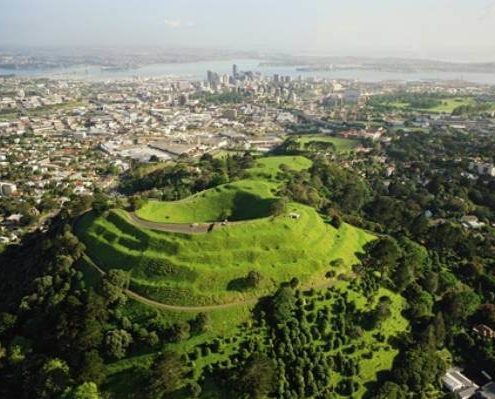 https://volcanofoundation.org/wp-content/uploads/2021/07/1560921535247.jpeg
399
710
Anne Fornier
https://volcanofoundation.org/wp-content/uploads/2021/04/volcano-foundation-1-1.png
Anne Fornier2021-08-09 08:00:322021-09-28 11:18:53TOP 5 DES VILLES CONSTRUITES SUR DES VOLCANS.
https://volcanofoundation.org/wp-content/uploads/2021/07/1560921535247.jpeg
399
710
Anne Fornier
https://volcanofoundation.org/wp-content/uploads/2021/04/volcano-foundation-1-1.png
Anne Fornier2021-08-09 08:00:322021-09-28 11:18:53TOP 5 DES VILLES CONSTRUITES SUR DES VOLCANS.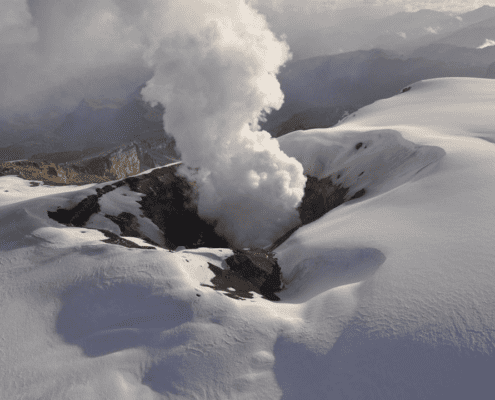 https://volcanofoundation.org/wp-content/uploads/2021/07/fotonoticia_20120701085944_1200.png
720
1200
Anne Fornier
https://volcanofoundation.org/wp-content/uploads/2021/04/volcano-foundation-1-1.png
Anne Fornier2021-08-02 08:00:132021-09-28 11:45:43TROIS CATASTROPHES RÉCENTES QUI AURAIENT PU ÊTRE ÉVITÉES
https://volcanofoundation.org/wp-content/uploads/2021/07/fotonoticia_20120701085944_1200.png
720
1200
Anne Fornier
https://volcanofoundation.org/wp-content/uploads/2021/04/volcano-foundation-1-1.png
Anne Fornier2021-08-02 08:00:132021-09-28 11:45:43TROIS CATASTROPHES RÉCENTES QUI AURAIENT PU ÊTRE ÉVITÉES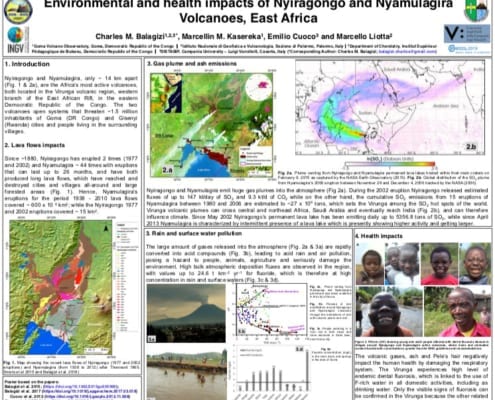 https://volcanofoundation.org/wp-content/uploads/2020/11/charles-balagizi-Environmental-and-health-impacts-of-Nyiragongo-and-Nyamulagira-Volcanoes-East-Africa.jpg
628
746
Anne Fornier
https://volcanofoundation.org/wp-content/uploads/2021/04/volcano-foundation-1-1.png
Anne Fornier2021-07-26 09:07:182021-09-28 11:46:23IMPACTS ENVIRONNEMENTAUX ET SANITAIRES DU NYIRAGONGO ET DU NYAMULAGIRA
https://volcanofoundation.org/wp-content/uploads/2020/11/charles-balagizi-Environmental-and-health-impacts-of-Nyiragongo-and-Nyamulagira-Volcanoes-East-Africa.jpg
628
746
Anne Fornier
https://volcanofoundation.org/wp-content/uploads/2021/04/volcano-foundation-1-1.png
Anne Fornier2021-07-26 09:07:182021-09-28 11:46:23IMPACTS ENVIRONNEMENTAUX ET SANITAIRES DU NYIRAGONGO ET DU NYAMULAGIRA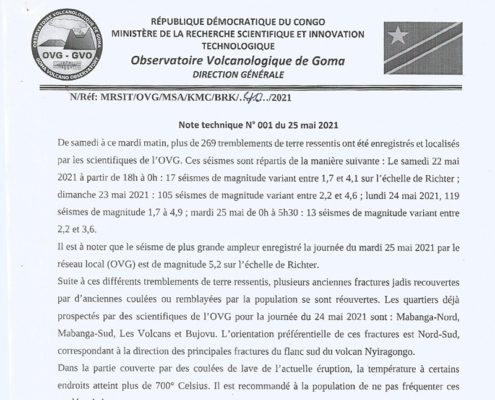 https://volcanofoundation.org/wp-content/uploads/2021/06/Nyiragongo-goma-GVO-technicalnote.jpg
707
800
Anne Fornier
https://volcanofoundation.org/wp-content/uploads/2021/04/volcano-foundation-1-1.png
Anne Fornier2021-07-22 17:14:312021-09-28 11:46:57NOTE TECHNIQUE SUR LE VOLCAN NYIRAGONGO À GOMA
https://volcanofoundation.org/wp-content/uploads/2021/06/Nyiragongo-goma-GVO-technicalnote.jpg
707
800
Anne Fornier
https://volcanofoundation.org/wp-content/uploads/2021/04/volcano-foundation-1-1.png
Anne Fornier2021-07-22 17:14:312021-09-28 11:46:57NOTE TECHNIQUE SUR LE VOLCAN NYIRAGONGO À GOMA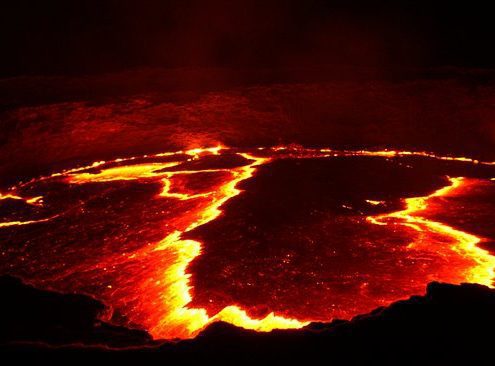
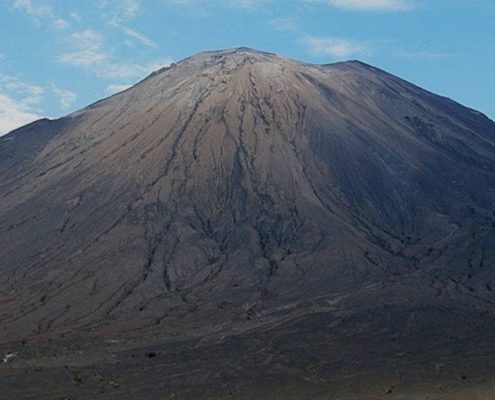 https://volcanofoundation.org/wp-content/uploads/2021/06/4-days-mount-ol-doinyo-lengai-banner-min.jpeg
520
1920
Anne Fornier
https://volcanofoundation.org/wp-content/uploads/2021/04/volcano-foundation-1-1.png
Anne Fornier2021-07-14 10:26:512021-09-28 11:50:23OL VOLCAN DOINYO LENGAI ET LA LAVE BLANCHE
https://volcanofoundation.org/wp-content/uploads/2021/06/4-days-mount-ol-doinyo-lengai-banner-min.jpeg
520
1920
Anne Fornier
https://volcanofoundation.org/wp-content/uploads/2021/04/volcano-foundation-1-1.png
Anne Fornier2021-07-14 10:26:512021-09-28 11:50:23OL VOLCAN DOINYO LENGAI ET LA LAVE BLANCHE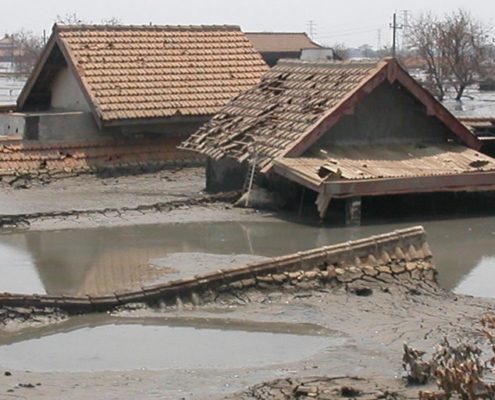 https://volcanofoundation.org/wp-content/uploads/2021/06/Home_sunk_by_mud_flow.jpg
512
1580
Anne Fornier
https://volcanofoundation.org/wp-content/uploads/2021/04/volcano-foundation-1-1.png
Anne Fornier2021-07-13 08:40:452021-09-28 11:52:12D’UN « ACCIDENT DE FORAGE » À LA NAISSANCE D’UN VOLCAN DE BOUE
https://volcanofoundation.org/wp-content/uploads/2021/06/Home_sunk_by_mud_flow.jpg
512
1580
Anne Fornier
https://volcanofoundation.org/wp-content/uploads/2021/04/volcano-foundation-1-1.png
Anne Fornier2021-07-13 08:40:452021-09-28 11:52:12D’UN « ACCIDENT DE FORAGE » À LA NAISSANCE D’UN VOLCAN DE BOUE
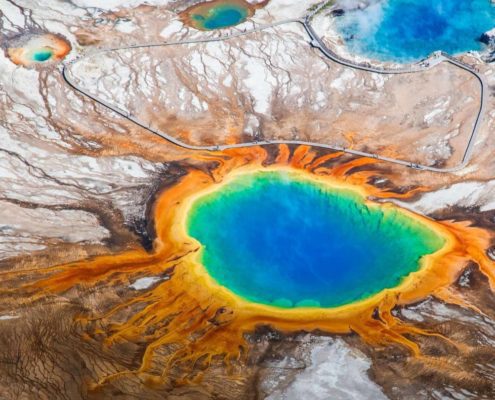
 https://volcanofoundation.org/wp-content/uploads/2021/06/katla-netflix.jpg
563
1000
Anne Fornier
https://volcanofoundation.org/wp-content/uploads/2021/04/volcano-foundation-1-1.png
Anne Fornier2021-06-28 15:25:042021-09-28 11:57:58DE LA FICTION À LA RÉALITÉ AVEC LA SÉRIE KATLA
https://volcanofoundation.org/wp-content/uploads/2021/06/katla-netflix.jpg
563
1000
Anne Fornier
https://volcanofoundation.org/wp-content/uploads/2021/04/volcano-foundation-1-1.png
Anne Fornier2021-06-28 15:25:042021-09-28 11:57:58DE LA FICTION À LA RÉALITÉ AVEC LA SÉRIE KATLA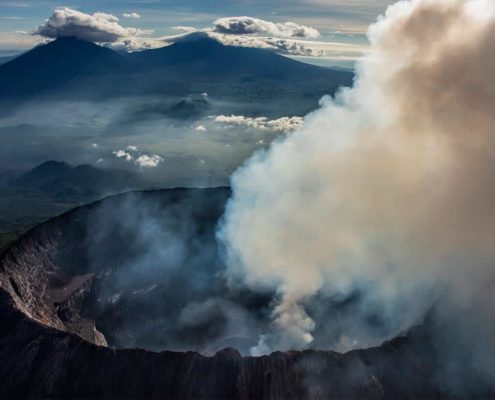 https://volcanofoundation.org/wp-content/uploads/2021/06/Download-4-1.jpeg
828
1440
Anne Fornier
https://volcanofoundation.org/wp-content/uploads/2021/04/volcano-foundation-1-1.png
Anne Fornier2021-06-25 09:45:532021-09-28 11:58:40ENQUÊTE DE BIOSUIVI DANS LA PROVINCE VOLCANIQUE DE VIRUNGA
https://volcanofoundation.org/wp-content/uploads/2021/06/Download-4-1.jpeg
828
1440
Anne Fornier
https://volcanofoundation.org/wp-content/uploads/2021/04/volcano-foundation-1-1.png
Anne Fornier2021-06-25 09:45:532021-09-28 11:58:40ENQUÊTE DE BIOSUIVI DANS LA PROVINCE VOLCANIQUE DE VIRUNGA https://volcanofoundation.org/wp-content/uploads/2021/06/anne-fornier-lepetitjournal.png
1065
2000
Anne Fornier
https://volcanofoundation.org/wp-content/uploads/2021/04/volcano-foundation-1-1.png
Anne Fornier2021-06-16 15:31:042021-09-28 11:59:2660% DES VOLCANS ACTIFS N’ONT PAS DE SYSTÈME DE SURVEILLANCE
https://volcanofoundation.org/wp-content/uploads/2021/06/anne-fornier-lepetitjournal.png
1065
2000
Anne Fornier
https://volcanofoundation.org/wp-content/uploads/2021/04/volcano-foundation-1-1.png
Anne Fornier2021-06-16 15:31:042021-09-28 11:59:2660% DES VOLCANS ACTIFS N’ONT PAS DE SYSTÈME DE SURVEILLANCE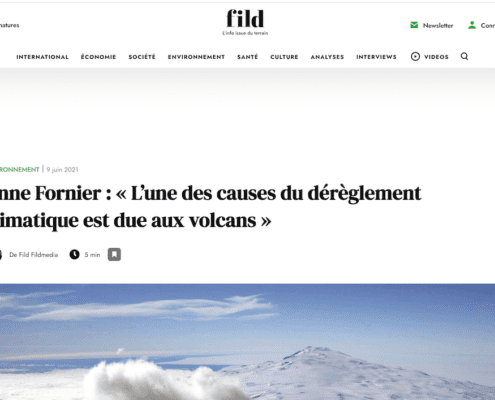 https://volcanofoundation.org/wp-content/uploads/2021/06/fildmedia-volcano-ecology.png
707
1200
Anne Fornier
https://volcanofoundation.org/wp-content/uploads/2021/04/volcano-foundation-1-1.png
Anne Fornier2021-06-09 11:48:462021-09-28 12:00:48UNE DES CAUSES DU CHANGEMENT CLIMATIQUE EST DU AUX VOLCANS
https://volcanofoundation.org/wp-content/uploads/2021/06/fildmedia-volcano-ecology.png
707
1200
Anne Fornier
https://volcanofoundation.org/wp-content/uploads/2021/04/volcano-foundation-1-1.png
Anne Fornier2021-06-09 11:48:462021-09-28 12:00:48UNE DES CAUSES DU CHANGEMENT CLIMATIQUE EST DU AUX VOLCANS https://volcanofoundation.org/wp-content/uploads/2021/06/volcano-foundation-sud-radio.png
675
1080
Anne Fornier
https://volcanofoundation.org/wp-content/uploads/2021/04/volcano-foundation-1-1.png
Anne Fornier2021-06-05 10:49:482021-09-28 12:01:22INTERVIEW SUR LA SITUATION À GOMA « CE QUI S’EST PASSÉ À NYIRAGONGO »
https://volcanofoundation.org/wp-content/uploads/2021/06/volcano-foundation-sud-radio.png
675
1080
Anne Fornier
https://volcanofoundation.org/wp-content/uploads/2021/04/volcano-foundation-1-1.png
Anne Fornier2021-06-05 10:49:482021-09-28 12:01:22INTERVIEW SUR LA SITUATION À GOMA « CE QUI S’EST PASSÉ À NYIRAGONGO » https://volcanofoundation.org/wp-content/uploads/2021/05/Volcano-School-newweb-01.jpg
511
750
Anne Fornier
https://volcanofoundation.org/wp-content/uploads/2021/04/volcano-foundation-1-1.png
Anne Fornier2021-05-22 10:43:562021-09-28 12:01:46NOUS LANÇONS VOLCANO SCHOOL: UNE PLATEFORME ÉDUCATIVE
https://volcanofoundation.org/wp-content/uploads/2021/05/Volcano-School-newweb-01.jpg
511
750
Anne Fornier
https://volcanofoundation.org/wp-content/uploads/2021/04/volcano-foundation-1-1.png
Anne Fornier2021-05-22 10:43:562021-09-28 12:01:46NOUS LANÇONS VOLCANO SCHOOL: UNE PLATEFORME ÉDUCATIVE https://volcanofoundation.org/wp-content/uploads/2021/05/Volcano_Libro_Esp.jpg
1080
1080
Anne Fornier
https://volcanofoundation.org/wp-content/uploads/2021/04/volcano-foundation-1-1.png
Anne Fornier2021-05-21 15:11:312021-09-28 12:02:34JOUR DE SANT JORDI: LA TERRE ET LES VOLCANS
https://volcanofoundation.org/wp-content/uploads/2021/05/Volcano_Libro_Esp.jpg
1080
1080
Anne Fornier
https://volcanofoundation.org/wp-content/uploads/2021/04/volcano-foundation-1-1.png
Anne Fornier2021-05-21 15:11:312021-09-28 12:02:34JOUR DE SANT JORDI: LA TERRE ET LES VOLCANS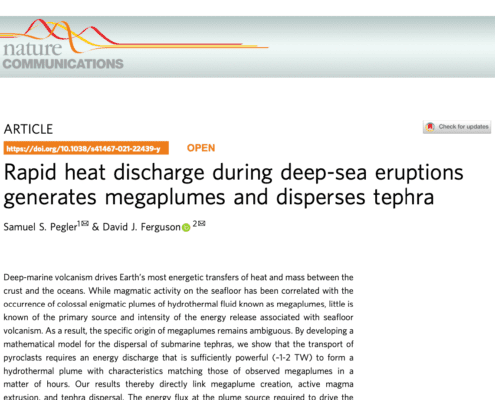 https://volcanofoundation.org/wp-content/uploads/2021/05/deep-sea-article.png
922
1312
Anne Fornier
https://volcanofoundation.org/wp-content/uploads/2021/04/volcano-foundation-1-1.png
Anne Fornier2021-05-20 11:51:232021-09-28 12:02:56LA NOUVELLE DÉCOUVERTE SUR LES ÉRUPTIONS SOUS-MARINES
https://volcanofoundation.org/wp-content/uploads/2021/05/deep-sea-article.png
922
1312
Anne Fornier
https://volcanofoundation.org/wp-content/uploads/2021/04/volcano-foundation-1-1.png
Anne Fornier2021-05-20 11:51:232021-09-28 12:02:56LA NOUVELLE DÉCOUVERTE SUR LES ÉRUPTIONS SOUS-MARINES https://volcanofoundation.org/wp-content/uploads/2021/06/volcano-foundation-timeout.png
1350
2000
Anne Fornier
https://volcanofoundation.org/wp-content/uploads/2021/04/volcano-foundation-1-1.png
Anne Fornier2021-04-23 17:05:372021-09-28 12:03:31LA FONDATION VOLCANO EST MAINTENANT SUR TIMEOUT !
https://volcanofoundation.org/wp-content/uploads/2021/06/volcano-foundation-timeout.png
1350
2000
Anne Fornier
https://volcanofoundation.org/wp-content/uploads/2021/04/volcano-foundation-1-1.png
Anne Fornier2021-04-23 17:05:372021-09-28 12:03:31LA FONDATION VOLCANO EST MAINTENANT SUR TIMEOUT ! https://volcanofoundation.org/wp-content/uploads/2021/04/web-igrd.png
677
1200
Anne Fornier
https://volcanofoundation.org/wp-content/uploads/2021/04/volcano-foundation-1-1.png
Anne Fornier2021-04-14 08:43:222021-09-28 12:04:47NOUS SOMMES ASSOCIÉS À L’IGRD
https://volcanofoundation.org/wp-content/uploads/2021/04/web-igrd.png
677
1200
Anne Fornier
https://volcanofoundation.org/wp-content/uploads/2021/04/volcano-foundation-1-1.png
Anne Fornier2021-04-14 08:43:222021-09-28 12:04:47NOUS SOMMES ASSOCIÉS À L’IGRD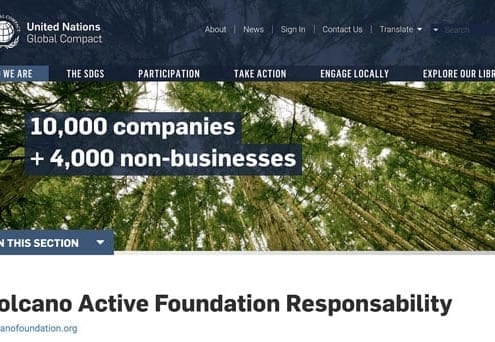 https://volcanofoundation.org/wp-content/uploads/2021/04/global-compact-volcano-foundation-min.jpg
342
600
Anne Fornier
https://volcanofoundation.org/wp-content/uploads/2021/04/volcano-foundation-1-1.png
Anne Fornier2021-04-12 17:08:042021-09-28 12:06:26NOUS APPARTENONS AU PACTE MONDIAL DES NATIONS UNIES
https://volcanofoundation.org/wp-content/uploads/2021/04/global-compact-volcano-foundation-min.jpg
342
600
Anne Fornier
https://volcanofoundation.org/wp-content/uploads/2021/04/volcano-foundation-1-1.png
Anne Fornier2021-04-12 17:08:042021-09-28 12:06:26NOUS APPARTENONS AU PACTE MONDIAL DES NATIONS UNIES https://volcanofoundation.org/wp-content/uploads/2021/04/quim-fabrega-event-preview-497x423-1.jpeg
423
497
Anne Fornier
https://volcanofoundation.org/wp-content/uploads/2021/04/volcano-foundation-1-1.png
Anne Fornier2021-04-08 16:41:192021-09-28 12:07:02EXPOSITION PIGMEOS BAKA-QUIM FÀBREGAS
https://volcanofoundation.org/wp-content/uploads/2021/04/quim-fabrega-event-preview-497x423-1.jpeg
423
497
Anne Fornier
https://volcanofoundation.org/wp-content/uploads/2021/04/volcano-foundation-1-1.png
Anne Fornier2021-04-08 16:41:192021-09-28 12:07:02EXPOSITION PIGMEOS BAKA-QUIM FÀBREGAS https://volcanofoundation.org/wp-content/uploads/2021/03/atlantico-articulo-anne2.jpg
1831
2262
Anne Fornier
https://volcanofoundation.org/wp-content/uploads/2021/04/volcano-foundation-1-1.png
Anne Fornier2021-03-24 11:21:032021-09-15 17:56:25ANNE FORNIER RÉAPPARAÎT DANS ATLANTICO
https://volcanofoundation.org/wp-content/uploads/2021/03/atlantico-articulo-anne2.jpg
1831
2262
Anne Fornier
https://volcanofoundation.org/wp-content/uploads/2021/04/volcano-foundation-1-1.png
Anne Fornier2021-03-24 11:21:032021-09-15 17:56:25ANNE FORNIER RÉAPPARAÎT DANS ATLANTICO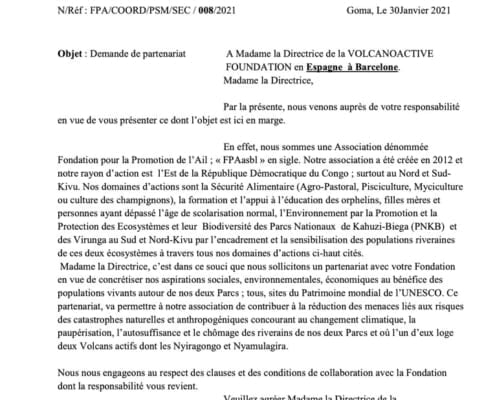 https://volcanofoundation.org/wp-content/uploads/2021/02/alianza-voldano-foundation.jpg
1081
765
Anne Fornier
https://volcanofoundation.org/wp-content/uploads/2021/04/volcano-foundation-1-1.png
Anne Fornier2021-02-07 15:28:372021-09-15 18:00:41ALLIANCE AVEC L’ASBL FPA
https://volcanofoundation.org/wp-content/uploads/2021/02/alianza-voldano-foundation.jpg
1081
765
Anne Fornier
https://volcanofoundation.org/wp-content/uploads/2021/04/volcano-foundation-1-1.png
Anne Fornier2021-02-07 15:28:372021-09-15 18:00:41ALLIANCE AVEC L’ASBL FPA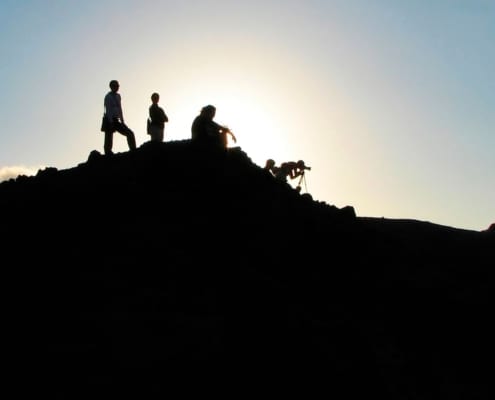 https://volcanofoundation.org/wp-content/uploads/2021/02/volcano-foundation-press.jpg
1200
1920
Anne Fornier
https://volcanofoundation.org/wp-content/uploads/2021/04/volcano-foundation-1-1.png
Anne Fornier2021-02-07 15:06:342021-09-15 18:02:53COMMUNICATION PENDANT UNE CRISE VOLCANIQUE
https://volcanofoundation.org/wp-content/uploads/2021/02/volcano-foundation-press.jpg
1200
1920
Anne Fornier
https://volcanofoundation.org/wp-content/uploads/2021/04/volcano-foundation-1-1.png
Anne Fornier2021-02-07 15:06:342021-09-15 18:02:53COMMUNICATION PENDANT UNE CRISE VOLCANIQUE https://volcanofoundation.org/wp-content/uploads/2020/11/Anne-Fornier-Volcano-School-1.jpg
1242
2208
Anne Fornier
https://volcanofoundation.org/wp-content/uploads/2021/04/volcano-foundation-1-1.png
Anne Fornier2020-11-10 16:21:042021-09-15 18:10:58L’ÉCOLE DES VOLCANS JOAN PELEGRÍ
https://volcanofoundation.org/wp-content/uploads/2020/11/Anne-Fornier-Volcano-School-1.jpg
1242
2208
Anne Fornier
https://volcanofoundation.org/wp-content/uploads/2021/04/volcano-foundation-1-1.png
Anne Fornier2020-11-10 16:21:042021-09-15 18:10:58L’ÉCOLE DES VOLCANS JOAN PELEGRÍ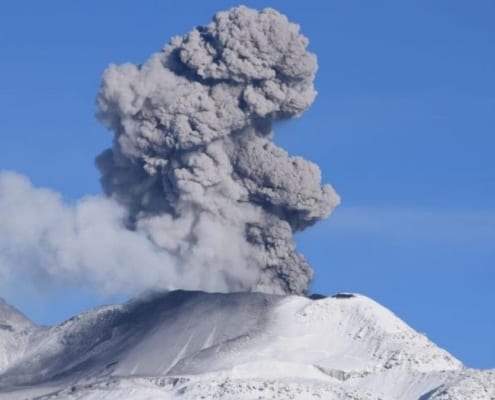 https://volcanofoundation.org/wp-content/uploads/2019/08/volcán-sabancaya.jpeg
697
1214
Anne Fornier
https://volcanofoundation.org/wp-content/uploads/2021/04/volcano-foundation-1-1.png
Anne Fornier2020-10-13 15:16:192021-09-15 18:14:39GARDONS L’OEIL SUR LES ACTIVITÉS VOLCANIQUES
https://volcanofoundation.org/wp-content/uploads/2019/08/volcán-sabancaya.jpeg
697
1214
Anne Fornier
https://volcanofoundation.org/wp-content/uploads/2021/04/volcano-foundation-1-1.png
Anne Fornier2020-10-13 15:16:192021-09-15 18:14:39GARDONS L’OEIL SUR LES ACTIVITÉS VOLCANIQUES https://volcanofoundation.org/wp-content/uploads/2020/09/why-volcano-foundation-lepetitjournal.png
823
1500
Anne Fornier
https://volcanofoundation.org/wp-content/uploads/2021/04/volcano-foundation-1-1.png
Anne Fornier2020-09-29 16:07:382021-09-15 18:22:40POURQUOI LA FONDATION VOLCAN ACTIVE EXISTE-T-ELLE ?
https://volcanofoundation.org/wp-content/uploads/2020/09/why-volcano-foundation-lepetitjournal.png
823
1500
Anne Fornier
https://volcanofoundation.org/wp-content/uploads/2021/04/volcano-foundation-1-1.png
Anne Fornier2020-09-29 16:07:382021-09-15 18:22:40POURQUOI LA FONDATION VOLCAN ACTIVE EXISTE-T-ELLE ? https://volcanofoundation.org/wp-content/uploads/2020/04/Volcanologia-para-la-sociedad.jpg
897
1671
Anne Fornier
https://volcanofoundation.org/wp-content/uploads/2021/04/volcano-foundation-1-1.png
Anne Fornier2020-04-06 09:00:172021-09-15 18:25:58VOLCANOLOGIE POUR LA SOCIÉTÉ
https://volcanofoundation.org/wp-content/uploads/2020/04/Volcanologia-para-la-sociedad.jpg
897
1671
Anne Fornier
https://volcanofoundation.org/wp-content/uploads/2021/04/volcano-foundation-1-1.png
Anne Fornier2020-04-06 09:00:172021-09-15 18:25:58VOLCANOLOGIE POUR LA SOCIÉTÉ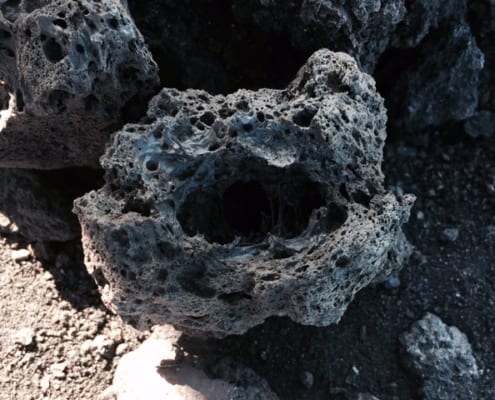
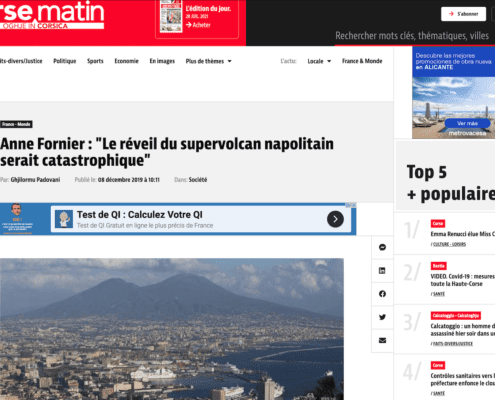 https://volcanofoundation.org/wp-content/uploads/2021/07/volcano-foundation-corse-matin.png
1009
1500
Anne Fornier
https://volcanofoundation.org/wp-content/uploads/2021/04/volcano-foundation-1-1.png
Anne Fornier2019-12-08 12:32:012021-09-15 18:37:43LE REVEIL DU SUPER-VOLCAN NAPOLITAIN SERAIT UNE CATASTROPHE
https://volcanofoundation.org/wp-content/uploads/2021/07/volcano-foundation-corse-matin.png
1009
1500
Anne Fornier
https://volcanofoundation.org/wp-content/uploads/2021/04/volcano-foundation-1-1.png
Anne Fornier2019-12-08 12:32:012021-09-15 18:37:43LE REVEIL DU SUPER-VOLCAN NAPOLITAIN SERAIT UNE CATASTROPHE https://volcanofoundation.org/wp-content/uploads/2019/11/anne-fornier-en-atlantico-1-2-scaled.jpg
1528
2560
Anne Fornier
https://volcanofoundation.org/wp-content/uploads/2021/04/volcano-foundation-1-1.png
Anne Fornier2019-11-18 16:22:482021-09-15 18:40:44INTERVIEW D’ALEXANDRE DEL VALLE À ANNE FORNIER
https://volcanofoundation.org/wp-content/uploads/2019/11/anne-fornier-en-atlantico-1-2-scaled.jpg
1528
2560
Anne Fornier
https://volcanofoundation.org/wp-content/uploads/2021/04/volcano-foundation-1-1.png
Anne Fornier2019-11-18 16:22:482021-09-15 18:40:44INTERVIEW D’ALEXANDRE DEL VALLE À ANNE FORNIER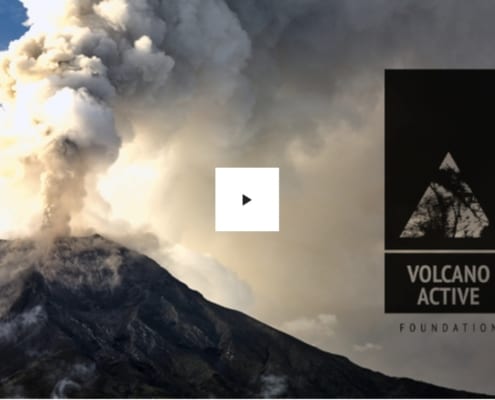 https://volcanofoundation.org/wp-content/uploads/2019/10/crowdfounding-volcano-active-foundation.jpg
754
1246
Anne Fornier
https://volcanofoundation.org/wp-content/uploads/2021/04/volcano-foundation-1-1.png
Anne Fornier2019-11-12 15:08:322021-09-15 18:46:11UNE SÉRIE DE DOCUMENTAIRES POUR ÉDUQUER LE MONDE
https://volcanofoundation.org/wp-content/uploads/2019/10/crowdfounding-volcano-active-foundation.jpg
754
1246
Anne Fornier
https://volcanofoundation.org/wp-content/uploads/2021/04/volcano-foundation-1-1.png
Anne Fornier2019-11-12 15:08:322021-09-15 18:46:11UNE SÉRIE DE DOCUMENTAIRES POUR ÉDUQUER LE MONDE https://volcanofoundation.org/wp-content/uploads/2019/09/Captura-de-pantalla-2019-09-09-a-las-16.31.13.png
1188
2244
Anne Fornier
https://volcanofoundation.org/wp-content/uploads/2021/04/volcano-foundation-1-1.png
Anne Fornier2019-09-09 15:00:002021-09-15 18:56:03INTERVIEW D’ANNE FORNIER SUR JET8
https://volcanofoundation.org/wp-content/uploads/2019/09/Captura-de-pantalla-2019-09-09-a-las-16.31.13.png
1188
2244
Anne Fornier
https://volcanofoundation.org/wp-content/uploads/2021/04/volcano-foundation-1-1.png
Anne Fornier2019-09-09 15:00:002021-09-15 18:56:03INTERVIEW D’ANNE FORNIER SUR JET8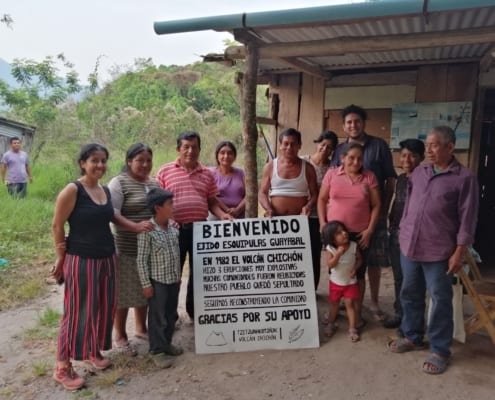 https://volcanofoundation.org/wp-content/uploads/2019/06/IMG_20190520_1859561-e1568884622975.jpg
1485
1980
Anne Fornier
https://volcanofoundation.org/wp-content/uploads/2021/04/volcano-foundation-1-1.png
Anne Fornier2019-09-09 14:24:052021-09-15 18:59:55LA FONDATION AU MEXIQUE
https://volcanofoundation.org/wp-content/uploads/2019/06/IMG_20190520_1859561-e1568884622975.jpg
1485
1980
Anne Fornier
https://volcanofoundation.org/wp-content/uploads/2021/04/volcano-foundation-1-1.png
Anne Fornier2019-09-09 14:24:052021-09-15 18:59:55LA FONDATION AU MEXIQUE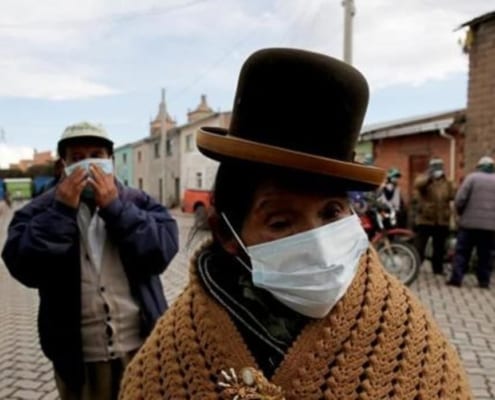 https://volcanofoundation.org/wp-content/uploads/2019/07/volcan-ubinas-kDzD-1240x698@abc.jpg
698
1240
Anne Fornier
https://volcanofoundation.org/wp-content/uploads/2021/04/volcano-foundation-1-1.png
Anne Fornier2019-08-22 08:32:462021-09-15 19:03:16COMMENT VOUS AFFECTE UNE ÉRUPTION VOLCANIQUE?
https://volcanofoundation.org/wp-content/uploads/2019/07/volcan-ubinas-kDzD-1240x698@abc.jpg
698
1240
Anne Fornier
https://volcanofoundation.org/wp-content/uploads/2021/04/volcano-foundation-1-1.png
Anne Fornier2019-08-22 08:32:462021-09-15 19:03:16COMMENT VOUS AFFECTE UNE ÉRUPTION VOLCANIQUE?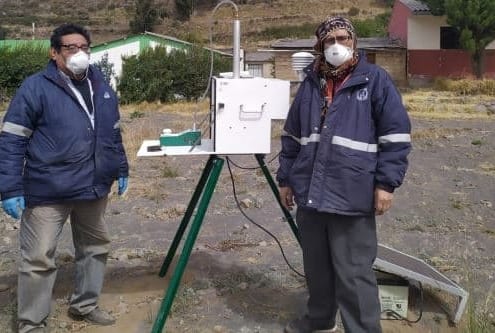 https://volcanofoundation.org/wp-content/uploads/2019/08/000608291M.jpg
333
500
Anne Fornier
https://volcanofoundation.org/wp-content/uploads/2021/04/volcano-foundation-1-1.png
Anne Fornier2019-08-06 11:19:122021-09-15 19:11:08SITUATION PRÉOCCUPANTE DU VOLCAN UBINAS
https://volcanofoundation.org/wp-content/uploads/2019/08/000608291M.jpg
333
500
Anne Fornier
https://volcanofoundation.org/wp-content/uploads/2021/04/volcano-foundation-1-1.png
Anne Fornier2019-08-06 11:19:122021-09-15 19:11:08SITUATION PRÉOCCUPANTE DU VOLCAN UBINAS https://volcanofoundation.org/wp-content/uploads/2019/08/Captura-de-pantalla-2019-08-05-a-las-16.56.27.png
2256
3048
Anne Fornier
https://volcanofoundation.org/wp-content/uploads/2021/04/volcano-foundation-1-1.png
Anne Fornier2019-08-05 15:16:332021-09-15 19:16:50LA FONDATION DANS LE DAUPHINÉ LIBÉRÉ
https://volcanofoundation.org/wp-content/uploads/2019/08/Captura-de-pantalla-2019-08-05-a-las-16.56.27.png
2256
3048
Anne Fornier
https://volcanofoundation.org/wp-content/uploads/2021/04/volcano-foundation-1-1.png
Anne Fornier2019-08-05 15:16:332021-09-15 19:16:50LA FONDATION DANS LE DAUPHINÉ LIBÉRÉ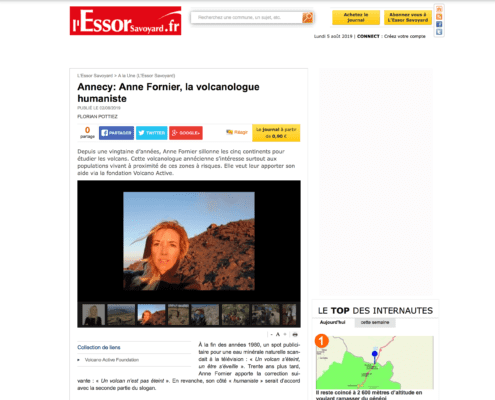 https://volcanofoundation.org/wp-content/uploads/2019/08/Captura-de-pantalla-2019-08-05-a-las-16.16.04.png
2112
2626
Anne Fornier
https://volcanofoundation.org/wp-content/uploads/2021/04/volcano-foundation-1-1.png
Anne Fornier2019-08-05 14:33:232021-09-15 19:19:30LA FONDATION AU BAILLEUR SAVOYARD
https://volcanofoundation.org/wp-content/uploads/2019/08/Captura-de-pantalla-2019-08-05-a-las-16.16.04.png
2112
2626
Anne Fornier
https://volcanofoundation.org/wp-content/uploads/2021/04/volcano-foundation-1-1.png
Anne Fornier2019-08-05 14:33:232021-09-15 19:19:30LA FONDATION AU BAILLEUR SAVOYARD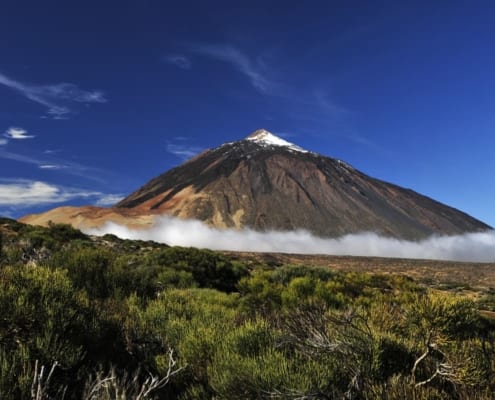 https://volcanofoundation.org/wp-content/uploads/2019/06/TEIDE3.jpg
800
1200
Anne Fornier
https://volcanofoundation.org/wp-content/uploads/2021/04/volcano-foundation-1-1.png
Anne Fornier2019-06-11 15:34:472021-09-15 19:22:25EL TEIDE FAIT PARTIE D’UN SYSTÈME VOLCANIQUE ACTIF
https://volcanofoundation.org/wp-content/uploads/2019/06/TEIDE3.jpg
800
1200
Anne Fornier
https://volcanofoundation.org/wp-content/uploads/2021/04/volcano-foundation-1-1.png
Anne Fornier2019-06-11 15:34:472021-09-15 19:22:25EL TEIDE FAIT PARTIE D’UN SYSTÈME VOLCANIQUE ACTIF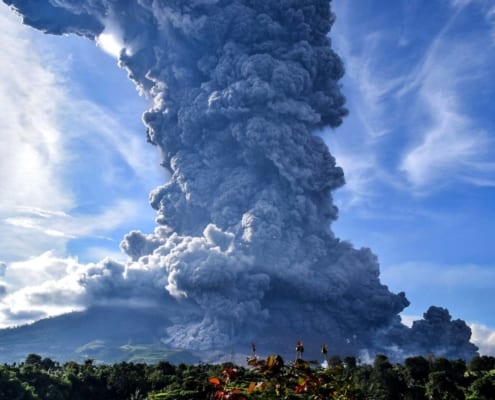 https://volcanofoundation.org/wp-content/uploads/2019/06/indonesia-volcano-active-1.jpg
1531
2041
Anne Fornier
https://volcanofoundation.org/wp-content/uploads/2021/04/volcano-foundation-1-1.png
Anne Fornier2019-06-11 08:27:342021-09-15 16:29:00ÉRUPTION DU SINABUNG
https://volcanofoundation.org/wp-content/uploads/2019/06/indonesia-volcano-active-1.jpg
1531
2041
Anne Fornier
https://volcanofoundation.org/wp-content/uploads/2021/04/volcano-foundation-1-1.png
Anne Fornier2019-06-11 08:27:342021-09-15 16:29:00ÉRUPTION DU SINABUNG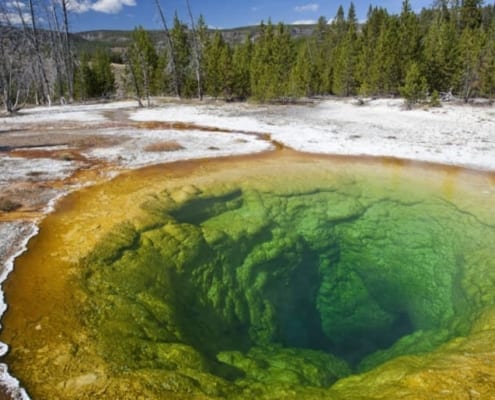 https://volcanofoundation.org/wp-content/uploads/2019/06/yellowstone-volcan-.jpg
515
1030
Anne Fornier
https://volcanofoundation.org/wp-content/uploads/2021/04/volcano-foundation-1-1.png
Anne Fornier2019-06-04 14:55:072021-09-15 19:27:16L’ERUPTION DE YELLOWSTONE POURRAIT PROVOQUER LA FIN DE L’HUMANITÉ
https://volcanofoundation.org/wp-content/uploads/2019/06/yellowstone-volcan-.jpg
515
1030
Anne Fornier
https://volcanofoundation.org/wp-content/uploads/2021/04/volcano-foundation-1-1.png
Anne Fornier2019-06-04 14:55:072021-09-15 19:27:16L’ERUPTION DE YELLOWSTONE POURRAIT PROVOQUER LA FIN DE L’HUMANITÉ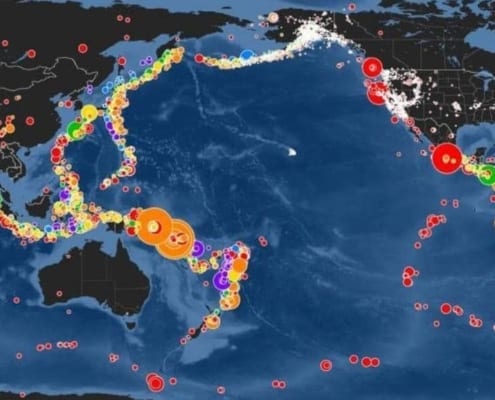 https://volcanofoundation.org/wp-content/uploads/2019/05/0.1-1.jpeg
578
1366
Anne Fornier
https://volcanofoundation.org/wp-content/uploads/2021/04/volcano-foundation-1-1.png
Anne Fornier2019-05-27 16:05:142021-09-15 19:29:36QUAND LA TERRE RÉVEILLE SA CEINTURE DE FEU.
https://volcanofoundation.org/wp-content/uploads/2019/05/0.1-1.jpeg
578
1366
Anne Fornier
https://volcanofoundation.org/wp-content/uploads/2021/04/volcano-foundation-1-1.png
Anne Fornier2019-05-27 16:05:142021-09-15 19:29:36QUAND LA TERRE RÉVEILLE SA CEINTURE DE FEU. https://volcanofoundation.org/wp-content/uploads/2019/05/Captura-de-pantalla-2019-05-07-a-las-17.33.54-e1568884781610.jpg
1848
1980
Anne Fornier
https://volcanofoundation.org/wp-content/uploads/2021/04/volcano-foundation-1-1.png
Anne Fornier2019-05-07 16:01:022021-09-15 19:32:20LA FONDATION SUR RADIO OLOT
https://volcanofoundation.org/wp-content/uploads/2019/05/Captura-de-pantalla-2019-05-07-a-las-17.33.54-e1568884781610.jpg
1848
1980
Anne Fornier
https://volcanofoundation.org/wp-content/uploads/2021/04/volcano-foundation-1-1.png
Anne Fornier2019-05-07 16:01:022021-09-15 19:32:20LA FONDATION SUR RADIO OLOT https://volcanofoundation.org/wp-content/uploads/2019/05/DSC6226-scaled.jpg
1709
2560
Anne Fornier
https://volcanofoundation.org/wp-content/uploads/2021/04/volcano-foundation-1-1.png
Anne Fornier2019-05-02 10:51:282021-09-15 19:35:07VOLCANO SCHOOL À OLOT
https://volcanofoundation.org/wp-content/uploads/2019/05/DSC6226-scaled.jpg
1709
2560
Anne Fornier
https://volcanofoundation.org/wp-content/uploads/2021/04/volcano-foundation-1-1.png
Anne Fornier2019-05-02 10:51:282021-09-15 19:35:07VOLCANO SCHOOL À OLOT https://volcanofoundation.org/wp-content/uploads/2019/05/iberianpress.jpg
628
715
Anne Fornier
https://volcanofoundation.org/wp-content/uploads/2021/04/volcano-foundation-1-1.png
Anne Fornier2019-05-02 08:14:052021-09-15 19:40:25LA FONDATION ET VOLCANO SCHOOL DANS IBERIAN PRESS
https://volcanofoundation.org/wp-content/uploads/2019/05/iberianpress.jpg
628
715
Anne Fornier
https://volcanofoundation.org/wp-content/uploads/2021/04/volcano-foundation-1-1.png
Anne Fornier2019-05-02 08:14:052021-09-15 19:40:25LA FONDATION ET VOLCANO SCHOOL DANS IBERIAN PRESS https://volcanofoundation.org/wp-content/uploads/2019/05/elgarrotxi.jpg
739
715
Anne Fornier
https://volcanofoundation.org/wp-content/uploads/2021/04/volcano-foundation-1-1.png
Anne Fornier2019-05-02 08:00:432021-09-15 19:46:12LA FONDATION ET VOLCANO SCHOOL AU GARROTXI
https://volcanofoundation.org/wp-content/uploads/2019/05/elgarrotxi.jpg
739
715
Anne Fornier
https://volcanofoundation.org/wp-content/uploads/2021/04/volcano-foundation-1-1.png
Anne Fornier2019-05-02 08:00:432021-09-15 19:46:12LA FONDATION ET VOLCANO SCHOOL AU GARROTXI https://volcanofoundation.org/wp-content/uploads/2021/07/volcanoschool-iberianpress.png
1028
1500
Anne Fornier
https://volcanofoundation.org/wp-content/uploads/2021/04/volcano-foundation-1-1.png
Anne Fornier2019-04-29 12:10:492021-09-15 19:50:12PREMIER ÉCHANGE D’ÉCOLES SUR LES VOL VOLCAN ET LEURS RISQUES
https://volcanofoundation.org/wp-content/uploads/2021/07/volcanoschool-iberianpress.png
1028
1500
Anne Fornier
https://volcanofoundation.org/wp-content/uploads/2021/04/volcano-foundation-1-1.png
Anne Fornier2019-04-29 12:10:492021-09-15 19:50:12PREMIER ÉCHANGE D’ÉCOLES SUR LES VOL VOLCAN ET LEURS RISQUES https://volcanofoundation.org/wp-content/uploads/2019/04/volcano-active-foundation-volcano-school-proyecto02.jpg
815
1900
Anne Fornier
https://volcanofoundation.org/wp-content/uploads/2021/04/volcano-foundation-1-1.png
Anne Fornier2019-04-26 07:52:482021-09-15 19:54:15TE ACERCO A MI VOLCAN
https://volcanofoundation.org/wp-content/uploads/2019/04/volcano-active-foundation-volcano-school-proyecto02.jpg
815
1900
Anne Fornier
https://volcanofoundation.org/wp-content/uploads/2021/04/volcano-foundation-1-1.png
Anne Fornier2019-04-26 07:52:482021-09-15 19:54:15TE ACERCO A MI VOLCAN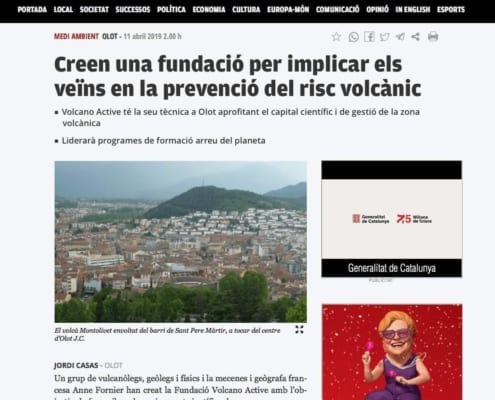 https://volcanofoundation.org/wp-content/uploads/2019/04/volcanofoundation-elpuntavui-11-04-19-1.jpg
1116
1052
Anne Fornier
https://volcanofoundation.org/wp-content/uploads/2021/04/volcano-foundation-1-1.png
Anne Fornier2019-04-25 13:31:522021-09-16 11:09:18LA FONDATION À EL PUNT AVUI
https://volcanofoundation.org/wp-content/uploads/2019/04/volcanofoundation-elpuntavui-11-04-19-1.jpg
1116
1052
Anne Fornier
https://volcanofoundation.org/wp-content/uploads/2021/04/volcano-foundation-1-1.png
Anne Fornier2019-04-25 13:31:522021-09-16 11:09:18LA FONDATION À EL PUNT AVUI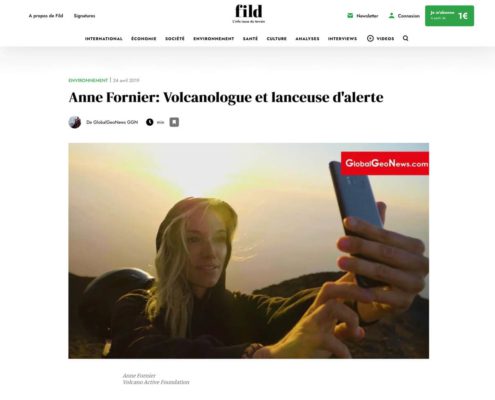 https://volcanofoundation.org/wp-content/uploads/2021/06/fildmedia-annefornier-volcanofoundation.jpg
964
1200
Anne Fornier
https://volcanofoundation.org/wp-content/uploads/2021/04/volcano-foundation-1-1.png
Anne Fornier2019-04-24 14:30:112021-09-16 11:03:06ANNE FORNIER : VOLCANOLOGUE ET LANCEUSE D’ALERTE
https://volcanofoundation.org/wp-content/uploads/2021/06/fildmedia-annefornier-volcanofoundation.jpg
964
1200
Anne Fornier
https://volcanofoundation.org/wp-content/uploads/2021/04/volcano-foundation-1-1.png
Anne Fornier2019-04-24 14:30:112021-09-16 11:03:06ANNE FORNIER : VOLCANOLOGUE ET LANCEUSE D’ALERTE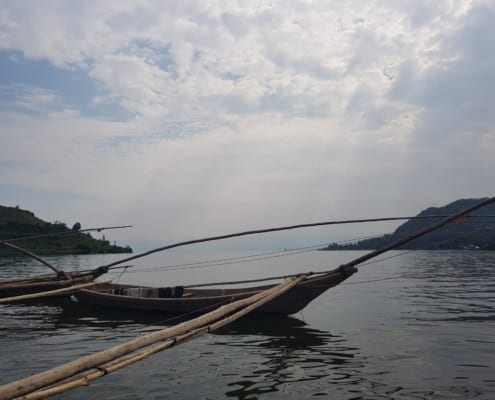 https://volcanofoundation.org/wp-content/uploads/2019/04/20180609_144602-e1568884935340.jpg
1485
1980
Anne Fornier
https://volcanofoundation.org/wp-content/uploads/2021/04/volcano-foundation-1-1.png
Anne Fornier2019-04-09 08:12:012021-09-16 10:58:44LACS MORTELS
https://volcanofoundation.org/wp-content/uploads/2019/04/20180609_144602-e1568884935340.jpg
1485
1980
Anne Fornier
https://volcanofoundation.org/wp-content/uploads/2021/04/volcano-foundation-1-1.png
Anne Fornier2019-04-09 08:12:012021-09-16 10:58:44LACS MORTELS
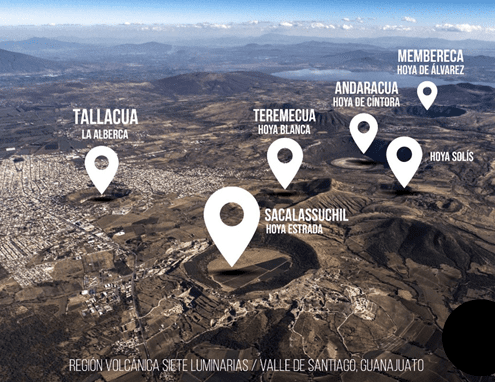
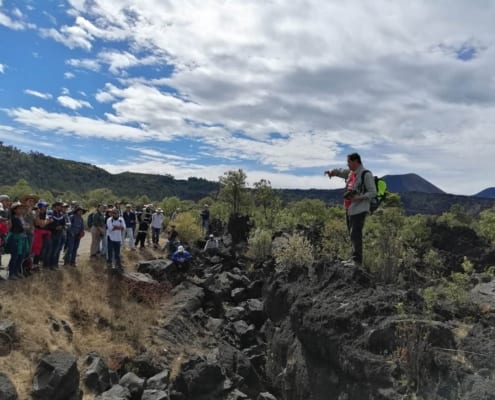 https://volcanofoundation.org/wp-content/uploads/2019/04/red-vulcanologos-volcanofoundation-1-1500x1125.jpg
1125
1500
Anne Fornier
https://volcanofoundation.org/wp-content/uploads/2021/04/volcano-foundation-1-1.png
Anne Fornier2019-04-04 12:47:462021-09-16 10:45:03RÉSEAU INTERNATIONAL DE GUIDES VOLCANIQUES
https://volcanofoundation.org/wp-content/uploads/2019/04/red-vulcanologos-volcanofoundation-1-1500x1125.jpg
1125
1500
Anne Fornier
https://volcanofoundation.org/wp-content/uploads/2021/04/volcano-foundation-1-1.png
Anne Fornier2019-04-04 12:47:462021-09-16 10:45:03RÉSEAU INTERNATIONAL DE GUIDES VOLCANIQUES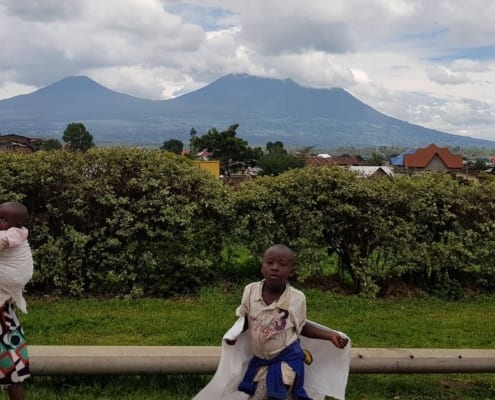 https://volcanofoundation.org/wp-content/uploads/2018/12/volcano-foundation-news-05.jpg
1080
1920
Anne Fornier
https://volcanofoundation.org/wp-content/uploads/2021/04/volcano-foundation-1-1.png
Anne Fornier2019-04-03 16:24:092021-09-16 10:41:24RISQUES NATURELS À GOMA ET DANS LES VILLAGES VOISINS
https://volcanofoundation.org/wp-content/uploads/2018/12/volcano-foundation-news-05.jpg
1080
1920
Anne Fornier
https://volcanofoundation.org/wp-content/uploads/2021/04/volcano-foundation-1-1.png
Anne Fornier2019-04-03 16:24:092021-09-16 10:41:24RISQUES NATURELS À GOMA ET DANS LES VILLAGES VOISINS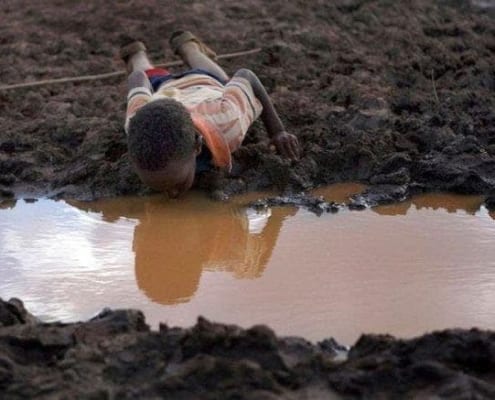
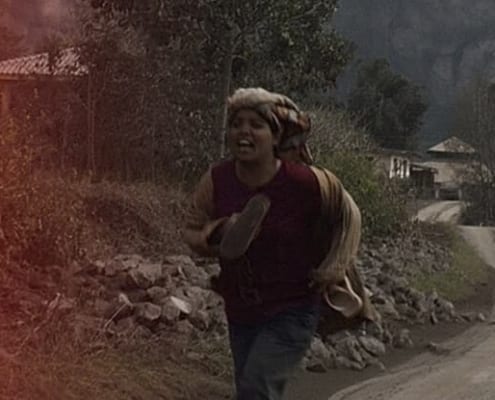 https://volcanofoundation.org/wp-content/uploads/2019/03/tira-claim-bg.jpg
415
1800
Anne Fornier
https://volcanofoundation.org/wp-content/uploads/2021/04/volcano-foundation-1-1.png
Anne Fornier2019-02-19 12:12:172021-09-16 10:31:01VEI: COMMENT ÉVALUEZ-VOUS LA FORCE D’UNE ÉRUPTION ?
https://volcanofoundation.org/wp-content/uploads/2019/03/tira-claim-bg.jpg
415
1800
Anne Fornier
https://volcanofoundation.org/wp-content/uploads/2021/04/volcano-foundation-1-1.png
Anne Fornier2019-02-19 12:12:172021-09-16 10:31:01VEI: COMMENT ÉVALUEZ-VOUS LA FORCE D’UNE ÉRUPTION ?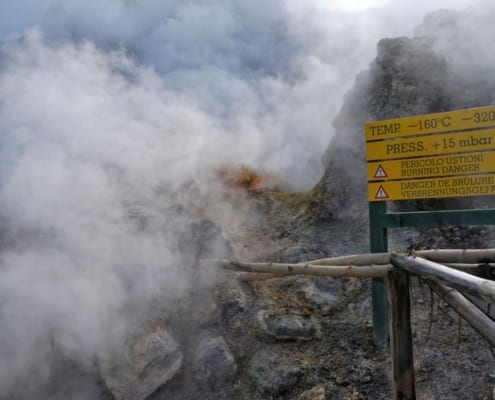 https://volcanofoundation.org/wp-content/uploads/2019/02/Volcano-active-foundation-campi-flegrei.jpg
1200
1920
Anne Fornier
https://volcanofoundation.org/wp-content/uploads/2021/04/volcano-foundation-1-1.png
Anne Fornier2019-02-18 17:07:142021-09-16 10:26:57CAMPI FLEGREI, UNE BOMBE À RETARDEMENT
https://volcanofoundation.org/wp-content/uploads/2019/02/Volcano-active-foundation-campi-flegrei.jpg
1200
1920
Anne Fornier
https://volcanofoundation.org/wp-content/uploads/2021/04/volcano-foundation-1-1.png
Anne Fornier2019-02-18 17:07:142021-09-16 10:26:57CAMPI FLEGREI, UNE BOMBE À RETARDEMENT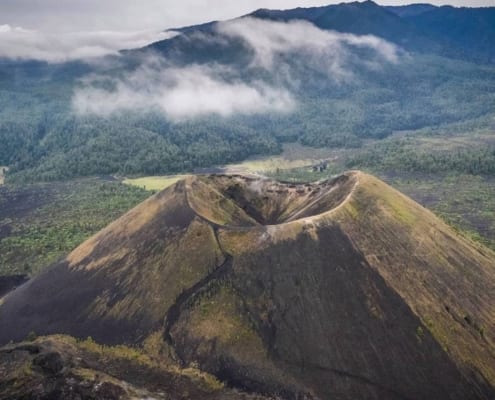 https://volcanofoundation.org/wp-content/uploads/2019/01/50609801_124290811952835_4551867685318688768_o.jpg
1958
2048
Anne Fornier
https://volcanofoundation.org/wp-content/uploads/2021/04/volcano-foundation-1-1.png
Anne Fornier2019-01-23 11:03:272021-09-16 10:20:37COMMENT NAÎT UN VOLCAN ? L’HISTOIRE DU PARICUTÍN
https://volcanofoundation.org/wp-content/uploads/2019/01/50609801_124290811952835_4551867685318688768_o.jpg
1958
2048
Anne Fornier
https://volcanofoundation.org/wp-content/uploads/2021/04/volcano-foundation-1-1.png
Anne Fornier2019-01-23 11:03:272021-09-16 10:20:37COMMENT NAÎT UN VOLCAN ? L’HISTOIRE DU PARICUTÍN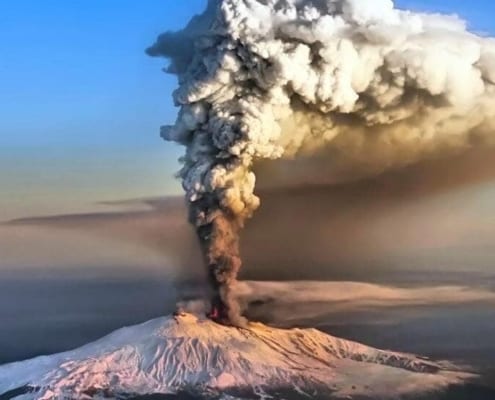 https://volcanofoundation.org/wp-content/uploads/2019/01/Etna-1024x550.jpg
550
1024
Anne Fornier
https://volcanofoundation.org/wp-content/uploads/2021/04/volcano-foundation-1-1.png
Anne Fornier2019-01-16 10:52:182021-09-16 10:18:57L’ETNA POURRAIT-ELLE PROVOQUER UN TSUNAMI ?
https://volcanofoundation.org/wp-content/uploads/2019/01/Etna-1024x550.jpg
550
1024
Anne Fornier
https://volcanofoundation.org/wp-content/uploads/2021/04/volcano-foundation-1-1.png
Anne Fornier2019-01-16 10:52:182021-09-16 10:18:57L’ETNA POURRAIT-ELLE PROVOQUER UN TSUNAMI ? https://volcanofoundation.org/wp-content/uploads/2018/12/volcano-foundation-news-05.jpg
1080
1920
Anne Fornier
https://volcanofoundation.org/wp-content/uploads/2021/04/volcano-foundation-1-1.png
Anne Fornier2018-12-20 12:40:492021-09-16 10:15:17LA FERTILITÉ DES VOLCANS
https://volcanofoundation.org/wp-content/uploads/2018/12/volcano-foundation-news-05.jpg
1080
1920
Anne Fornier
https://volcanofoundation.org/wp-content/uploads/2021/04/volcano-foundation-1-1.png
Anne Fornier2018-12-20 12:40:492021-09-16 10:15:17LA FERTILITÉ DES VOLCANS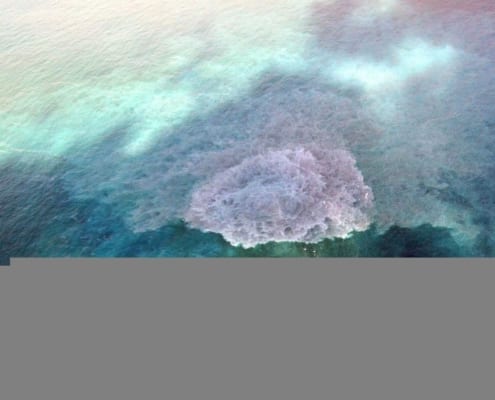 https://volcanofoundation.org/wp-content/uploads/2018/12/Vuelo-Científico-INVOLCAN-GC-El-Hierro-230112-550.jpg
795
1200
Anne Fornier
https://volcanofoundation.org/wp-content/uploads/2021/04/volcano-foundation-1-1.png
Anne Fornier2018-12-20 11:56:112021-09-16 10:10:55CE QUE NOUS SAVONS DES VOLCANS SOUS-MARINS
https://volcanofoundation.org/wp-content/uploads/2018/12/Vuelo-Científico-INVOLCAN-GC-El-Hierro-230112-550.jpg
795
1200
Anne Fornier
https://volcanofoundation.org/wp-content/uploads/2021/04/volcano-foundation-1-1.png
Anne Fornier2018-12-20 11:56:112021-09-16 10:10:55CE QUE NOUS SAVONS DES VOLCANS SOUS-MARINSVOLCANO ACTIVE FOUNDATION RESPONSABILITY
nº 2195 authorised by the Madrid's Minister of Justice
NIF G67314625
SF Abocados Francesc Macia 7 pl17
08029 Barcelona, Spain

 UN VOLCAN POTENTIELLEMENT DANGEREUX SOUS LA MER MÉDITERRANÉE
UN VOLCAN POTENTIELLEMENT DANGEREUX SOUS LA MER MÉDITERRANÉENous pouvons demander que les cookies soient mis en place sur votre appareil. Nous utilisons des cookies pour nous faire savoir quand vous visitez nos sites Web, comment vous interagissez avec nous, pour enrichir votre expérience utilisateur, et pour personnaliser votre relation avec notre site Web.
Cliquez sur les différentes rubriques de la catégorie pour en savoir plus. Vous pouvez également modifier certaines de vos préférences. Notez que le blocage de certains types de cookies peut avoir une incidence sur votre expérience sur nos sites Web et les services que nous sommes en mesure d’offrir.
Ces cookies sont strictement nécessaires pour vous délivrer les services disponibles sur notre site et pour utiliser certaines de ses fonctionnalités.
Du fait que ces cookies sont absolument nécessaires au bon rendu du site, les refuser aura un impact sur la façon dont il fonctionne. Vous pouvez toujours bloquer ou effacer les cookies via les options de votre navigateur et forcer leur blocage sur ce site. Mais le message vous demandant de les accepter/refuser reviendra à chaque nouvelle visite sur notre site.
Nous respectons votre choix de refuser les cookies mais pour éviter de vous le demander à chaque page laissez nous en utiliser un pour mémoriser ce choix. Vous êtes libre de revenir sur ce choix quand vous voulez et le modifier pour améliorer votre expérience de navigation. Si vous refusez les cookies nous retirerons tous ceux issus de ce domaine.
Nous vous fournissons une liste de cookies déposés sur votre ordinateur via notre domaine, vous pouvez ainsi voir ce qui y est stocké. Pour des raisons de sécurité nous ne pouvons montrer ou afficher les cookies externes d’autres domaines. Ceux-ci sont accessibles via les options de votre navigateur.
Ces cookies collectent des informations de manière compilée pour nous aider à comprendre comment notre site est utilisé et combien son performantes nos actions marketing, ou pour nous aider à personnaliser notre site afin d’améliorer votre expérience de navigation.
Si vous ne souhaitez pas que votre visite soit pistée sur notre site vous pouvez bloquer ce pistage dans votre navigateur ici :
Nous utilisons également différents services externes comme Google Webfonts, Google Maps, autres hébergeurs de vidéo. Depuis que ces FAI sont susceptibles de collecter des données personnelles comme votre adresse IP nous vous permettons de les bloquer ici. merci de prendre conscience que cela peut hautement réduire certaines fonctionnalités de notre site. Les changement seront appliqués après rechargement de la page.
Réglages des polices Google :
Réglages Google Map :
Réglages reCAPTCHA :
Intégrations de vidéo Vimeo et Youtube :
Les cookies suivants sont également requis - Vous pouvez choisir d’autoriser leur utilisation :
Vous pouvez lire plus de détails à propos des cookies et des paramètres de confidentialité sur notre Page Mentions Légales.
PRIVACY POLICY